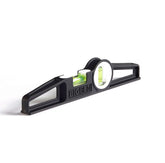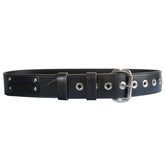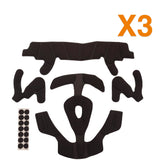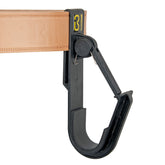Building containment is often essential during construction, repair or building projects.
After all, construction sites are dangerous places at the best of times. Health and safety is always of utmost importance, which is why it’s our mission to ensure every tradesperson gets home safely at the end of a working day, and the public is protected from any work taking place.
And that’s where scaffold sheeting has an important role to play. Whether you need to provide temporary protection from adverse weather, or contain debris during a demolition project, scaffold sheeting provides the ideal solution for ensuring the continued safety of both workers and the public.
Yes, we’re all used to a bit of wind and rain. But for those working outside or on-site, it can be debilitating to a project and easily damage productivity if not managed in the right way. Add to that the risk of dropped tools or falling debris, and it’s clear we must do everything in our power to ensure work can continue in the safest manner possible.
What are the scaffold sheeting options?
So, you’ve decided you need some scaffold sheeting. You conduct a search online and are presented with plentiful of options. From thickness and flame retardant, to eco-friendly and printed, how do you know what’s right for you? To help make the best decision for your project, we’ve put together this scaffold sheeting buying guide.
What weighting should you choose?
When it comes to scaffold sheeting, there are a range of weightings you can choose from depending on your project needs.
The general rule of thumb is, the heavier the weight, the more robust the sheeting will be, meaning superior protection.
Weights can range from 150gsm for a standard sheeting, to 240gsm for a premium sheeting. If your project is in the middle of summer and the weather is great, 150gsm would most likely be fine. If you’re struggling with more adverse conditions such as wind, rain or snow, 240gsm would be more suitable.
Do I need Flame Retardant Scaffold Sheeting?
Flame retardant scaffold sheeting further protects your construction site by reducing the risk of fire. Flame retardant products are coated in a unique chemical that helps prevent materials from catching fire. There are a range of certified options available, such as LPS1215, so look out for this to ensure you’re getting scaffold sheeting you can trust.
Should you choose an eco-friendly option?
Although 2020 was a tough year, it has given us an opportunity to build our industries back in a more sustainable manner.
One way we can help our industry shift towards even greater environmentally friendly practices is the use of eco-friendly scaffold sheeting.
BIGBEN recently launched its BIGBEN Superclad ECO Scaffold Sheeting, which has been specially manufactured to be recycled, tested by independent third party testing houses for recyclability, and is halogen free. We believe it’s the future of scaffold sheeting. You might just feel the same.
Scaffold sheeting could help you grow your business
Yes, that’s right. Scaffold sheeting presents a unique opportunity to help you promote your business and increase your brand profile.
How you ask? With printed sheeting. You can print your company logo or unique brand messages on your scaffold sheeting to capture the attention of passers-by.
Digital printing allows you to wrap any building, site or hoarding with a powerful, highly visible message. Full colour photos, images and text can be mixed and printed to create high-quality impactful prints you can communicate to the public. This option is certainly becoming ever-more popular.
You’ve made your choice, what’s next?
Now you’ve purchased the most suitable scaffold sheeting for your project, there are a few essentials to cover. Depending on the purpose of your scaffold sheeting, it will need to be installed in a specific way.
If you’re using sheeting for weather protection, you need to make sure the upper sheets overlap the lower sheets externally so rain runs down the outside of the scaffold sheeting.
If you’re using sheeting for building containment, make sure the upper sheets overlaps the lower sheets internally to contain debris within the sheeting.
Finally, when scaffold sheeting is to be installed, it’s imperative to ensure the structure adheres to all BS standards and codes of practice to accommodate the increase in wind loadings. At Leach’s, we always advise seeking guidance from a qualified scaffold designer or structural engineer before any sheeting or debris netting is installed. A full risk-assessment should also always be undertaken.
If you’re interested in scaffold sheeting and have any questions, our dedicate sales team are waiting for your call. Contact us on 01432 346 890.


















